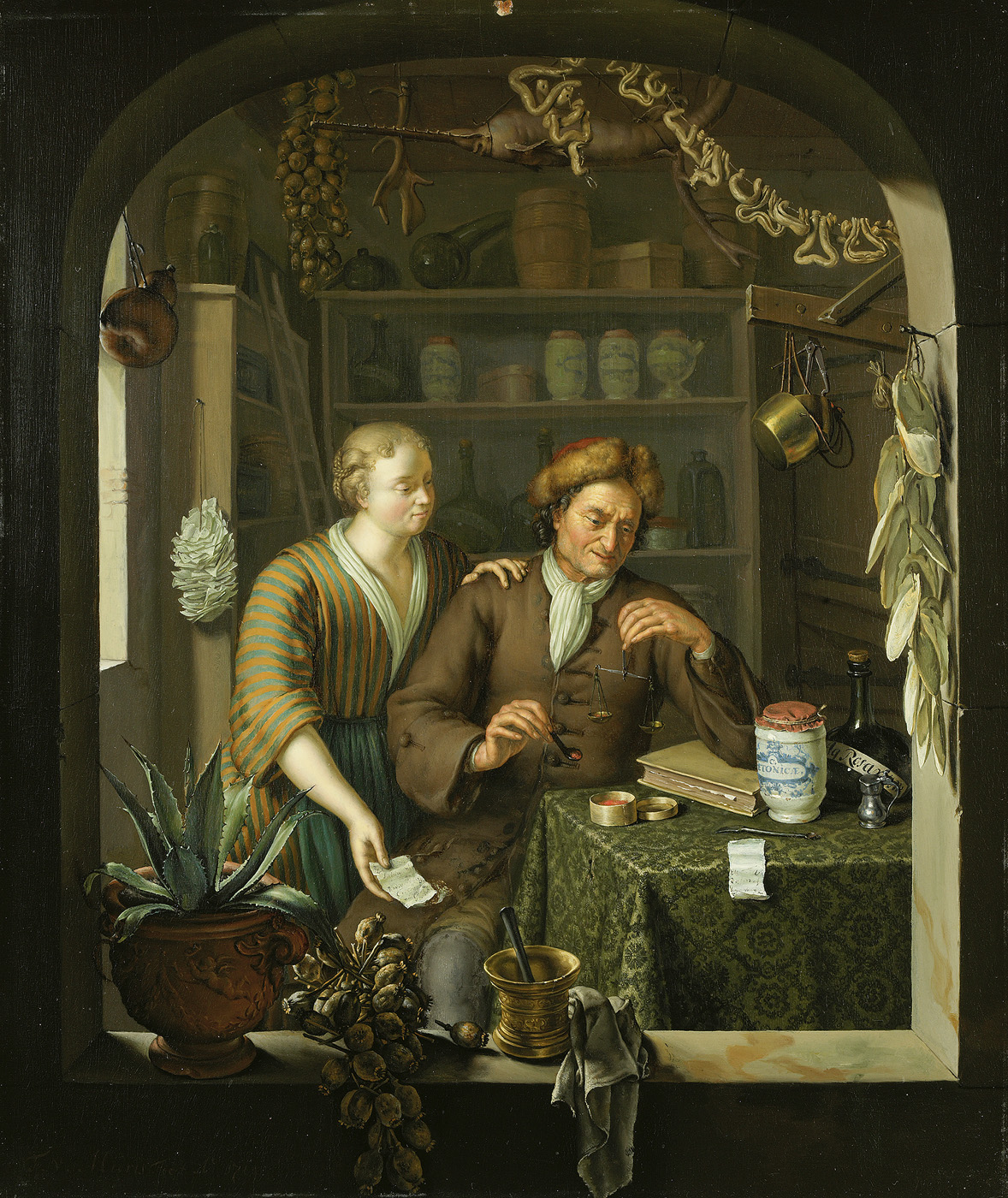
Frans van Mieris the Younger, The Apothecary, 1717
Rijksmuseum https://www.rijksmuseum.nl/
In Europe in the 17th and 18th Century, the Apothecary, like a modern Pharmacist was a separate occupation from that of Doctor or Surgeon. In New Netherland, it may be possible that these occupations were merged. There were few people with the skills to create remedies popular in Europe. The Native Americans had significant knowledge about plant medicines. Many women made remedies in their homes, and grew plants that were medicinal in their gardens, and so an exchange between the Native Americans and the Europeans in the use of herbs and plants for healing likely took place.
So, for the sake of this project, we are presenting this image of an Apothecary, with his very important horticultural tools. Aloe vera for burns and pods of poppy seed to ease pain, both of these plants would have been imported. The Aloe vera was grown in Barbados by the Dutch, and perhaps a plant or two made its way to a windowsill in New Netherland, as it could not have survived the winters in a garden there. The Poppy pods would likely have been brought from India or the middle east by merchant ships, in dried form that allowed for transport.
An Apothecary's shelf would have contained many plant derivatives in jars or bottles. Some of these jars would have been produced in Delft, Holland, and others perhaps in Spain during the time of the Spanish occupations of the Netherlands.
Read more about typical remedies here: https://oldoperatingtheatre.com/deciphering-the-contents-of-apothecary-…;

